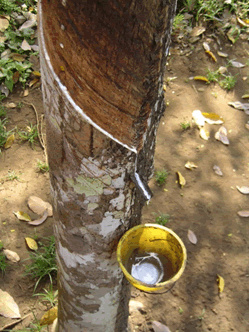Extractivism is an activity characterized by the removal of resources from the environment, such as metals, rocks, oil, natural gas, vegetables, among others. This practice has been carried out since prehistory, being of fundamental importance for the survival of man.
Extractivism was the first economic activity carried out in Brazil, through the exploitation of Brazilwood by Portuguese colonizers. From this tree a reddish pigment is extracted, used in fabric dyeing.

Exploration of Brazilwood in the colonial period
There are different types of extractivism, especially plant, mineral and animal:
Plant extractivism: consists of the removal of resources of plant origin. In Brazil, especially in the North Region, it is very common to extract wood, nuts, açaí and latex (which is a sap extracted from rubber trees), widely used for the manufacture of rubber.

mineral extractivism
Mineral extractivism: it is characterized by the exploitation of underground mineral resources, such as gold, manganese, diamond, bauxite, iron ore, mineral water, petroleum, copper, cobalt, uranium, silver, among many others.
Animal extractivism: is a type of extractivism in which animals are captured, such as hunting (illegal in Brazil, except for indigenous communities) and fishing, and must obey certain rules - fish reproduction period and Weight.
Despite being very important for human survival and economic development, extractivism can trigger various socio-environmental problems: reduction of biodiversity, extinction of animal and plant species, pollution, changes in the soil, etc.
By Wagner de Cerqueira and Francisco
Graduated in Geography
Kids School Team

